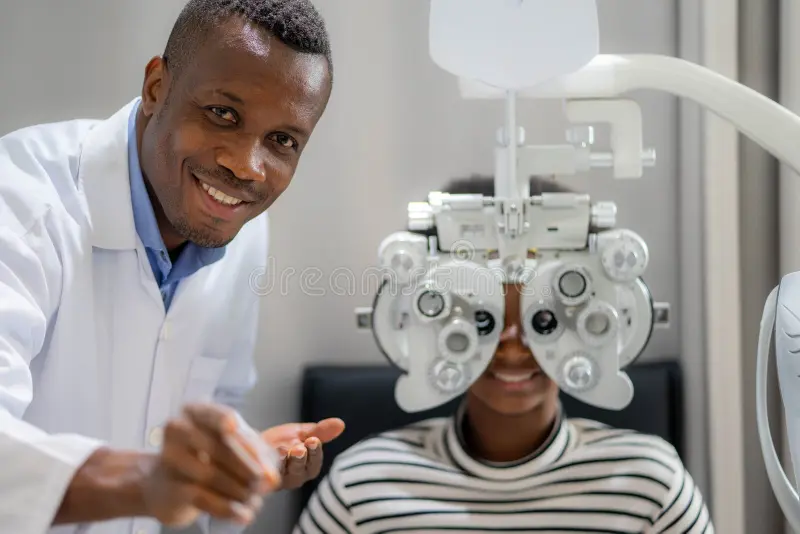In today’s fast-paced digital world, technology is transforming every aspect of our lives — and eye care is no exception. One of the most notable advancements in modern optometry is the Computerized Eye Examination, a precise, efficient, and patient-friendly method of assessing vision and eye health.
But what exactly is a computerized eye exam, and why should you care? Let’s break it down.
ALSO READ: Diagnosis & Treatment of Eye Infections: What You Need to Know
ALSO READ: Screening and Treatment for Cataract: Restoring Clarity to Your Vision
What Is a Computerized Eye Examination?
A Computerized Eye Examination uses advanced digital equipment and software to measure various aspects of your eyes — from how well you see to the internal health of your eye structures. Unlike traditional methods that rely heavily on manual techniques, computerized systems automate much of the testing, ensuring greater accuracy and faster results.
Key Tests Performed During a Computerized Eye Exam
Here are some of the procedures typically included in a computerized eye exam:
-
Auto-Refractometry
This measures how light is bent as it enters your eye, helping to determine the correct prescription for eyeglasses or contact lenses. -
Non-Contact Tonometry (NCT)
Also known as the “puff test,” this checks the pressure inside your eye — an important step in screening for glaucoma. -
Digital Visual Acuity Test
Using a digital screen, this measures how clearly you can see at various distances. -
Retinal Imaging
High-resolution digital cameras capture detailed images of the back of your eye (the retina), helping to detect conditions like diabetic retinopathy, macular degeneration, or retinal detachment. -
Corneal Topography
This maps the surface of your cornea — especially useful for diagnosing astigmatism or fitting contact lenses.
Benefits of Computerized Eye Examination
-
✅ More Accurate Diagnoses
Advanced machines minimize human error and give eye doctors more reliable data to work with. -
⏱️ Faster Exam Process
Tests are completed more quickly, meaning shorter waiting times for patients. -
💻 Comprehensive Eye Health Records
All data is stored digitally, making it easier to track changes in your vision over time. -
👁️🗨️ Early Detection of Eye Conditions
With detailed imaging and analysis, potential problems can be spotted earlier — even before symptoms appear. -
🤝 Better Patient Understanding
Many eye clinics now show patients their digital results and images, helping them understand their eye health better.
Who Should Get a Computerized Eye Exam?
Whether you’re a student, professional, senior, or someone who simply spends a lot of time in front of screens, routine eye checks are essential. Computerized eye exams are suitable for all age groups and are particularly helpful for:
-
People with diabetes or high blood pressure
-
Children with vision issues or learning difficulties
-
Adults using computers or mobile devices for long hours
-
Seniors at risk of cataracts or glaucoma
Conclusion
Computerized eye examinations are not just a luxury — they’re the new standard in eye care. They combine speed, accuracy, and comfort to ensure that your vision and eye health are protected at every stage of life. If it’s been more than a year since your last eye exam, or if you’re experiencing headaches, blurry vision, or eye strain, it might be time to schedule a computerized eye test at a reputable clinic near you.

